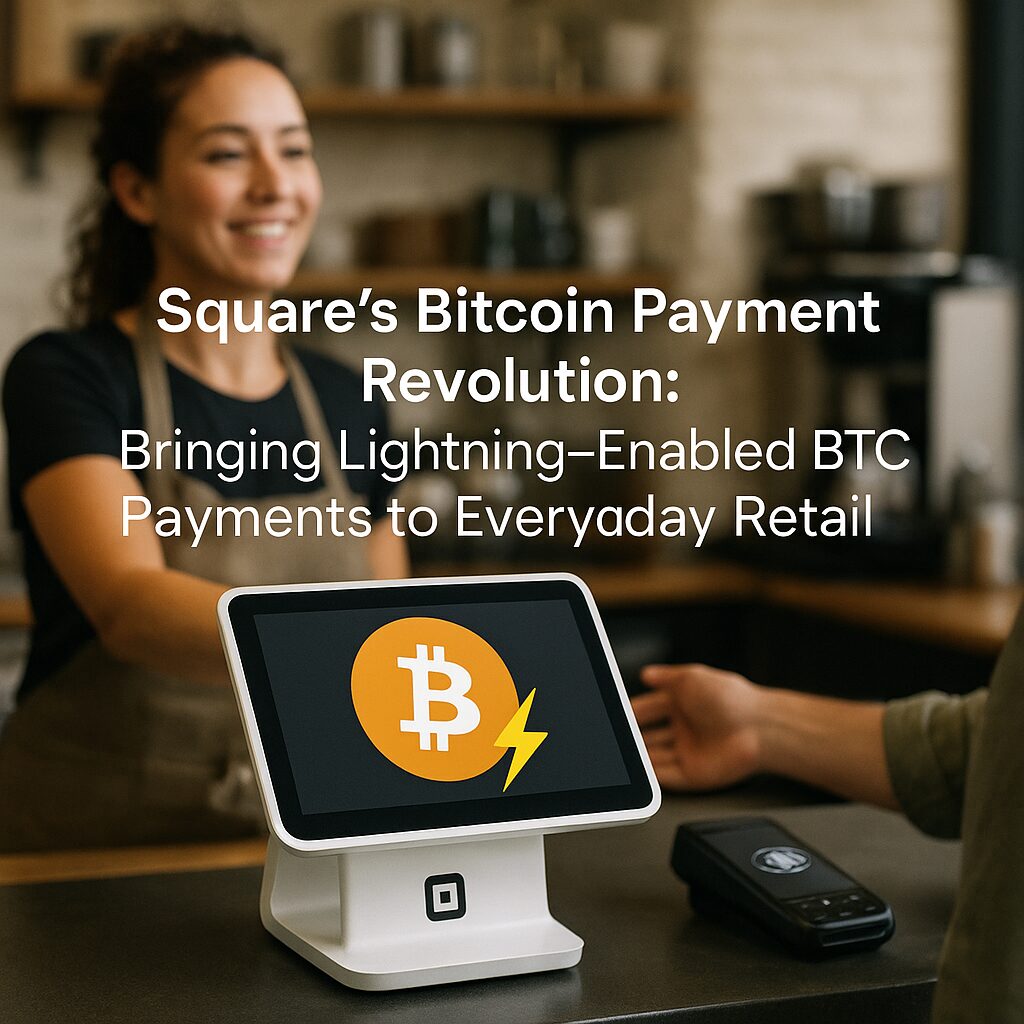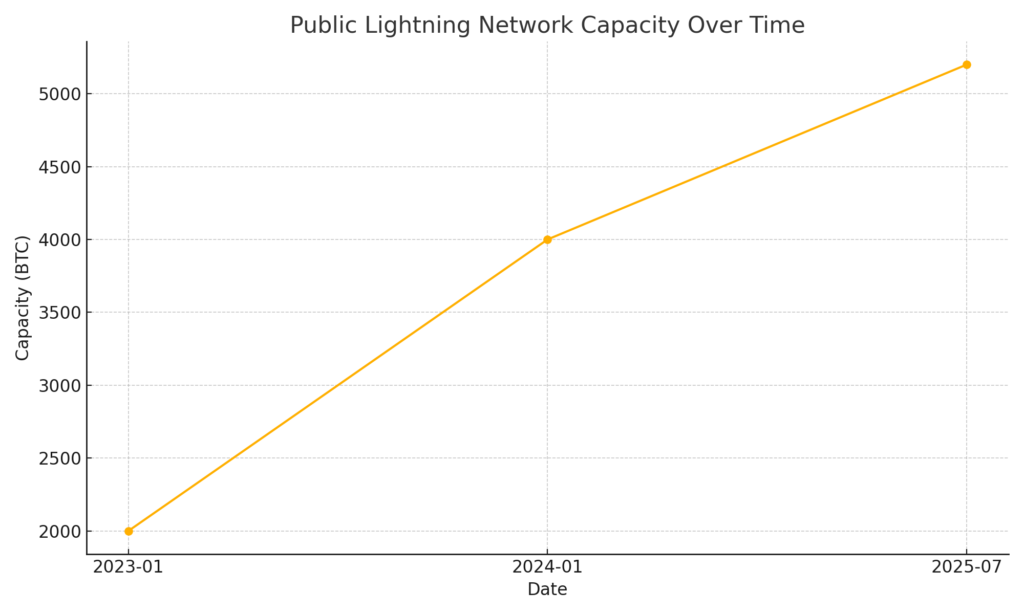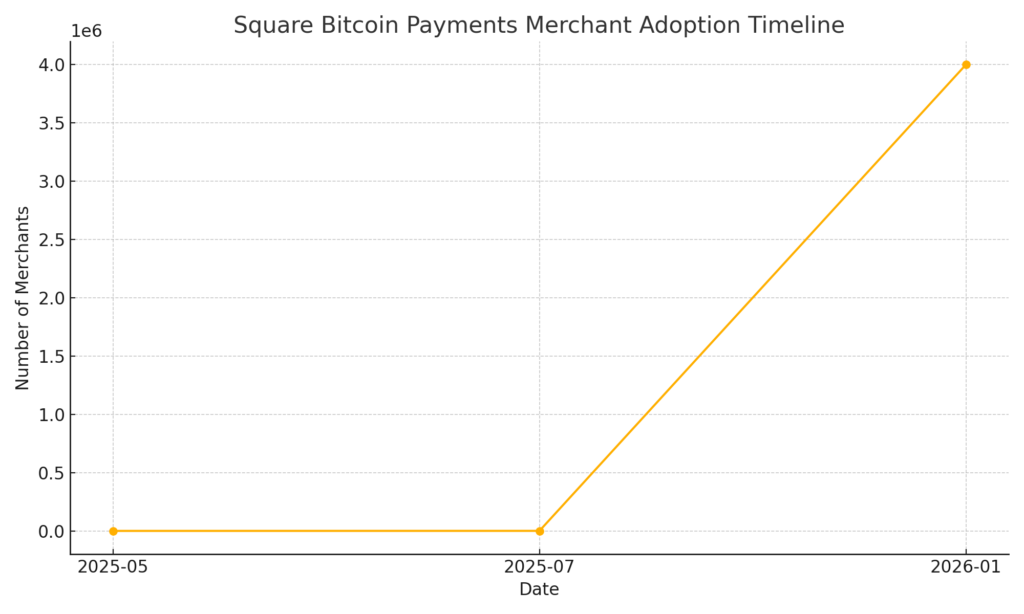
Main Points:
- Square has launched a limited pilot allowing select merchants to accept Bitcoin via existing POS terminals using the Lightning Network.
- The pilot covers an initial few hundred merchants (including a Las Vegas trial at Bitcoin 2025) with plans to expand to all 4 million eligible Square sellers by 2026.
- Lightning Network capacity has grown to over 5,000 BTC (~$475 million) in early 2025, enabling low‑fee, near‑instant transactions.
- Regulatory clarity remains the key barrier, with Block lobbying U.S. Congress to modernize fragmented rules (e.g., CLARITY Act).
- Block’s broader vision includes integrating Bitcoin into daily commerce beyond a store of value, via products like Bitkey and TIDAL.
Introduction
In a move poised to accelerate cryptocurrency adoption in retail, Jack Dorsey‑led Block, Inc. has quietly initiated a pilot program enabling merchants to accept Bitcoin (BTC) through Square’s widely used point‑of‑sale (POS) terminals. Announced via X on July 23, 2025, this limited rollout marks the first time Bitcoin payments, powered by the Lightning Network, have been integrated directly into Square’s existing payment infrastructure without the need for hardware upgrades.
Pilot Program Details
The initial phase, launched at select merchants—such as a demonstration at the Bitcoin 2025 conference in Las Vegas—allows consumers to pay with BTC by simply scanning a QR code shown on Square’s POS screen. Square handles the complex Lightning routing, payment settlement, and optional automatic fiat conversion in the background, giving merchants a seamless experience comparable to credit‑card transactions. As of July 2025, the pilot encompasses roughly 500 merchants, with plans to scale to hundreds of thousands later this year and full availability to all 4 million qualified Square sellers by 2026.
Insert Figure 1: Lightning Network Capacity Growth Chart here

Leveraging the Lightning Network
The Lightning Network, a second‑layer protocol built on top of Bitcoin, addresses BTC’s scalability and fee challenges by enabling off‑chain micro‑transactions settled in batches on the main chain. Public Lightning capacity surpassed 5,000 BTC (approximately $475–$509 million) in early 2025—a 384 percent increase since 2020—demonstrating institutional‑grade growth and readiness for merchant use.
“By leveraging Lightning, we can offer near‑instant settlement at a fraction of the cost of credit‑card networks, which typically charge 1.5–3.5 percent per transaction,” noted Block’s payments team.
Regulatory Challenges
Despite the technical readiness, Square’s Bitcoin payment expansion hinges on regulatory approvals. Block’s own blog—titled “Policies to Unleash Bitcoin as Everyday Money”—argues that the U.S.’s current patchwork of digital‑asset regulations creates market barriers, stifles innovation, and inconveniences end users. The company is lobbying for passage of the CLARITY Act, which aims to distinguish between Bitcoin’s unique characteristics and those of other digital assets, streamline licensing, and clarify tax treatment.
“Bitcoin’s capped supply and decentralized issuance make it fundamentally different from other tokens,” the blog states, urging legislators to craft rules that reflect these attributes.
Broader Ecosystem Context
Square’s initiative aligns with Block’s multi‑pronged strategy to integrate Bitcoin into everyday life. Earlier this year, the company launched Bitkey, a self‑custody Lightning wallet, and has long invested in TIDAL, a music‑streaming service that could eventually support crypto tipping or micropayments. These efforts underscore Block’s vision of Bitcoin not merely as digital gold, but as a medium of exchange for daily commerce.
Insert Figure 2: Square Bitcoin Payments Merchant Adoption Timeline here

Recent Trends and Outlook
Beyond Square, several fintech players and traditional banks are exploring Bitcoin payments via Lightning. Major payment processors have reported pilot programs in Europe and Latin America, while financial giants like Visa and Mastercard test Lightning partnerships for cross‑border remittances. On‑chain data shows growing Lightning channel capacity and a surge in micropayment applications—ranging from content monetization to IoT payments. Market analysts project that, by end‑2026, Lightning‑enabled payments could represent 1 percent of global retail transactions, equating to over $100 billion in annual volume.
Conclusion
Square’s limited Bitcoin payment rollout represents a watershed moment in crypto’s journey toward mainstream commerce. By harnessing the Lightning Network’s speed and cost advantages, Square can offer merchants an alternative to traditional card rails, while consumers gain broader spending options. Regulatory hurdles remain, but Block’s advocacy and the broader industry momentum suggest that Bitcoin payments could soon be as ubiquitous as credit and debit cards—ushering in a new era where digital currency flows seamlessly through everyday transactions.

